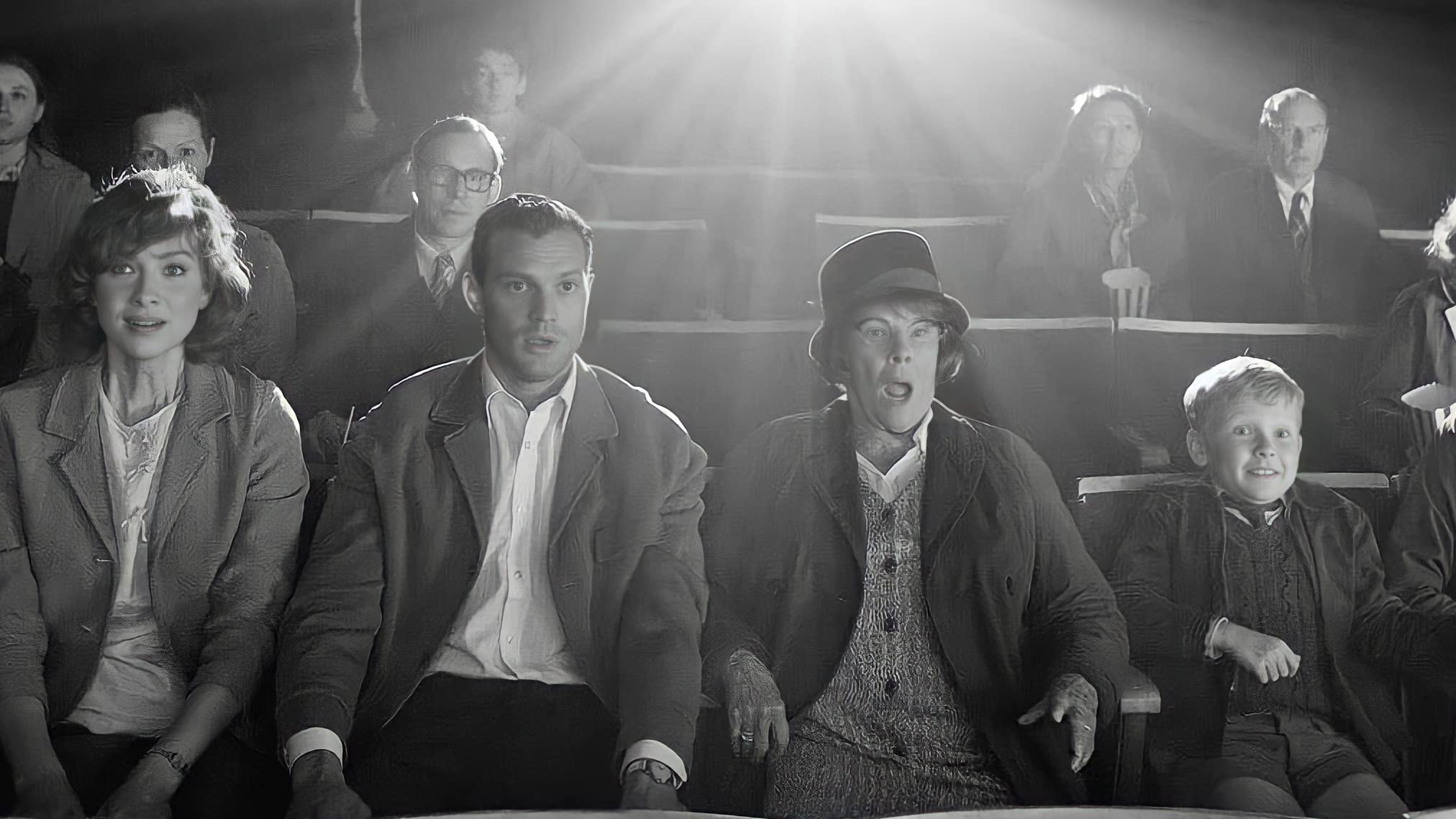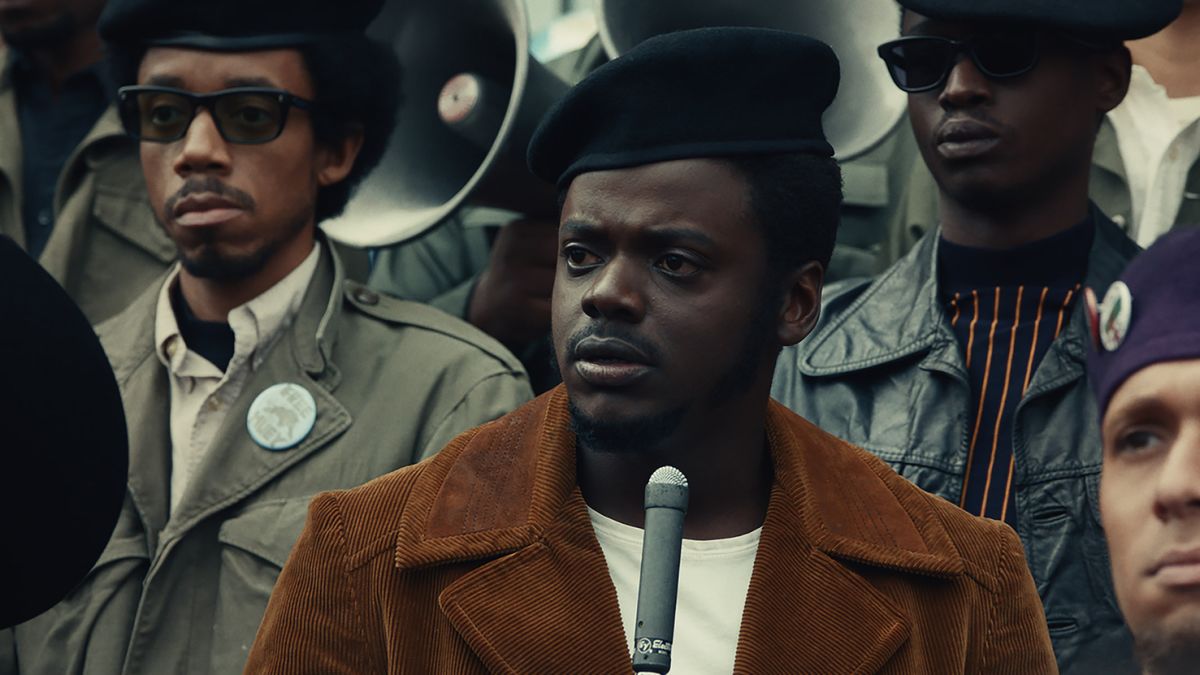Oscar nominations aren’t handed out randomly. The films and filmmakers that earn them tend to follow certain trends and achieve certain criteria.This guide will help you identify those traits which could predict an Oscar-contender, and the red flags which might announce a pretender.
Pay close enough attention, and you will find that the films which often end up on the list of Oscar nominees are never really that surprising. Despite the hundreds of films that are released every year, you can almost always narrow it down to a handful of possible nominees in any one category. Unfortunately, this select group of Oscar-potential films may not always represent the most creative or even the most impressive achievements in that category. It is a sad truth that the Oscars are as much to do with popularity as they are to do with technical (or artistic) achievement.
The Oscars aren’t alone in this, either. Almost every major film award is biased in some way. They are, after all, granted by humans, and there are flaws in both human judgment and the methods of judgment which cannot be avoided. The Oscar nominees, for example, are chosen by people within the industry. They don’t necessarily have the best idea of what resonates with the general public, and there will always be a factor of nominees being chosen simply because of what they represent to the industry, more so than a merit of a piece of particular work.
That brings me to the dilemma that is the Oscar-bait movie. Here you have a film that appears to check many of the same boxes as the films which often get nominated, and yet they aren’t seriously considered. You can have popular A-list actors, award-winning filmmakers and crew, even heartfelt stories which resonate with current events – but it may not matter. The unfortunate truth is that many Oscar-hopeful movies just never get the right sort of momentum that is needed at the end of the year to carry through and provide an Oscar nomination.
Below I have outlined a process I use to identify these types of films. It is not a fail-proof system. Many films have missed in all of these categories and still achieved Oscar-fame, but categorically this helps to look at all of the steps most Oscar-nominated films have to achieve on their way to making history. This guide can be used for other awards as well, since typically as the Oscars go so do many of the other “end of year” awards circuits for film.
First sign of Oscar-potential (or lack-of) = The Festival Circuit
International film festivals are an opportunity for independently-financed films to achieve some matter of recognition. This can range from the opportunity to simply be seen by a large audience, to winning some of the most prestigious awards in cinema that aren’t given out by an awards show. For many films, especially at the local film festivals, the invitation to participate often represents the height of a film’s achievement. For others, it is the opportunity to be seen by distribution companies in the hope of having the rights of the film purchased on a lucrative contract.

In other words, film festivals represent every level of filmmaking. From amateurs self-funding their first feature film, to students showing off their talents, to big-name directors testing out their newest non-mainstream release. Just because a film makes it to a film festival doesn’t mean it will earn prestige, commercial appeal, or pick up any sort of momentum for the mainstream awards season. In fact, it’s a place where many films go to die. If the response to a particular film is not positive at a festival, it has little chance of achieving any sort of distribution deal.
But festival success CAN predict Oscar success, especially if a film is picked up by a major distributor. When that happens, it means a distributor sees some sort of appeal – either commercial appeal or prestige appeal. The people that view these films and make these deals are like the scouts of a professional sports team. They know what they are talking about and what they are looking for, and a distribution deal is like being drafted into a professional sports league. They see potential.
Oscar success comes more often with those films that are “drafted” at festivals for their prestige potential more so than their commercial potential, but often the two factors are one and the same. For example, films with A-list stars and well-known directors are easier for distribution companies to pick up because that is an easy sell based on previous track record. However, that doesn’t equate to the type of prestige appeal that can generate Oscar buzz.

What generates Oscar buzz at festivals is three things. First, the film HAS to have some sort of distribution deal, or is financed by a major studio already. Without that backing the film can’t go on press tours later on to promote the film for Oscar consideration. Second, a film that wins prestigious awards at the most important film festivals gets a huge leg up on its competition for Oscar-nominations. The awards themselves aren’t necessarily important, but the press is. That ties into the third aspect, which is highly favorable press coverage.
Highly favorable press coverage has the potential to reach Oscar voters, and it increases the possibility that the voter will remember the film later on. In this regard, films that may not win awards but have otherwise overwhelmingly positive press coverage at awards get an advantage. When it comes to films winning Oscar-nominations, the most important thing is making sure your film is remembered. Festivals often happen early in the year, and by the time voters draft their nominees it can be 6+ months later and they may have seen 100’s of movies in the interim.
Summary: Oscar-bait films don’t tend to win major awards at the most prestigious festivals, and generally don’t get distribution deals due to positive critical/audience response. Look at reviews of Oscar-potential films premiering at festivals to get a “sneak-peek” on whether they might have staying power.
Release Date = Very Important
Despite the popularity of movies released during the summer, November and December are the most important months of the year when it comes to movies with awards aspirations. November and December tend to see the greatest selection of films released which are the most competitive during the awards season. The reason is the same as I mentioned above; studios want Oscar voters to remember their film(s). The deadline for Oscar nominations is usually in the middle of January, and voting for Oscars happens in March.
Traditionally a film is eligible for an Oscar award if it is released the preceding calendar year. So films being voted on for the 2023 Oscars have to have been released Jan 1 – Dec 31st 2022. For this reason, the closer you can get to the end of that release window the better because your film will remain fresh in the voter’s mind. Films released early in the year, even if they are well-received, have a chance of being overshadowed by something else, even if that something else is arguably worse.

This has, unfortunately, created a phenomenon where a movie released earlier in the year is seen as “less prestigious” than one with wide release later on. Even if a film is very highly regarded, if it doesn’t have a wide release in the last quarter of the film it can struggle to build Oscar buzz. Likewise, you have the opposite case as well. Studios try to push their films to be Oscar-potential even if they aren’t, and one of the ways they do this is schedule a release in November or December.
Not every movie releasing in November or December has Oscar potential. This is also a popular time of year for commercial releases due to family-centered holidays. Be cautious about movies releasing the week of Thanksgiving and right before Christmas. On the other hand, if the film is released on the last weekend of the year, it has a high chance of being considered high potential for Oscar nominations. Same thing for films released early November and early December; it doesn’t make sense for commercial films to release during those times and so those release dates are often available for smaller, more prestigious films.
Likewise, if a non-commercial film that is helmed by a prestigious director, or features a high-profile A-list star releases in September or October, think long and hard about it’s Oscar potential. Usually, after the summer festival season is complete, studios will try to make money off of the films they picked up. If they don’t think it will have Oscar-potential, or it received mixed reviews on initial premiere dates, they will unload it with a wide release in the fall when release dates don’t tend to have a lot of competition.

Of course, the proliferation of streaming services makes things more complicated. However, I think you can maintain a similar approach. Films released on streaming services earlier in the year may have trouble maintaining buzz later in the year. Those released later have a better chance. Likewise, viewing films at home does not necessarily provide the same sort of impact as viewing them in theaters (which is a topic for another day). This puts streaming films at a disadvantage unless they are really well received by critics and audiences.
Summary: Wide release dates in September/October are bad. Release dates early November, December, or last week in December are good. Films released earlier than September have almost no chance for generating Oscar buzz for the most prestigious awards.
Director Track Record
Has the director of the film won or been nominated for best director in the last 10 years? If the answer is yes, there is a good chance the name recognition alone is enough to grab the attention of Oscar voters. If the director has a history of being nominated (much less winning), they are essentially a shoo in if their film achieves a certain threshold of critical praise. Directors in that category might include Steven Spielberg, Paul Thomas Anderson, Martin Scorsese, or Alejandro Inarritu. Directors just outside that club, but with recent wins on their side giving them momentum include Sam Mendes, Guillermo del Toro, Denis Villeneuve, Damien Chazelle, Bong Joon-Ho, and Alfonso Cauron.

Up-and-coming filmmakers may also make a splash in the realm of Oscar buzz with enough critical acclaim. Lee Isaac Chung, Emerald Fennell, Jordan Peele, and Chloe Zhao are recent examples. However, these can be difficult to predict. Lee Isaac Chung and Chloe Zhao both had films receive acclaim on the festival circuit before achieving Oscar nominations. Emerald Fennell meanwhile had never made a feature film before being nominated for an Oscar. However, she and Jordan Peele (and even Todd Phillips) share a common thread in that their Oscar nomination came after their career changed directions. Fennell was an accomplished TV show runner and Peele had made his name in comedy. The shock factor, of seeing a filmmaker succeed in an unexpected way, can make an impression on Oscar voters.
Oscar nominations can also come to directors who have been active (or inactive) in the industry, but have a filmography that is respected by their peers. Jane Campion is a great example, as her Power of the Dog won the Oscar for best director thirteen years after her last feature film was released. The success Campion had earlier in her career did give her name recognition, which paired well with very favorable Oscar buzz and provided the necessary momentum for a nomination. You could make a similar argument for Bong Joon-Ho, whose filmography was very highly regarded in certain circles before his international success with Parasite.

The opposite can be true as well. Look at David O. Russel. He received Oscar nominations in 2010, 2012 and 2013. But since then his films have not been as highly regarded. That consistent success, and then relative lack of success, has a negative connotation. Here, previous success is a detriment, because he seemingly lost what made him so appealing to Oscar voters. As such, it may be hard for an Oscar voter to give him a vote over someone else who has not had the same level of success but shows more promise at the moment.
Summary: Directors with consistent Oscar success, and recent Oscar success, provides a high probability of Oscar-potential, especially the most well-known directors. Likewise, directors with critically acclaimed filmographies who haven’t yet crossed the threshold of an Oscar-nomination have lots of potential, as do directors who have made a sudden, shocking career change to be very critically acclaimed. Directors who have declined from Oscar relevance but haven’t stopped trying to make Oscar-worthy films are red flags for Oscar bait.
Who is the Production and Distribution Company?
It is relatively rare for a major studio to produce and release a film that will achieve Oscar nominations in the most prestigious categories. Instead, a vast majority of Oscar-nominated films are independently produced, or produced by smaller companies, and then distributed by a company that specializes in small-to-mid-budgeted films with Oscar intentions. Those studios change over time, but generally include names like Amblin Entertainment, Neon, A24, Regency Enterprises, Fox Searchlight, Sony International Pictures, etc. Note that many of these companies are small subsidiaries of larger film studios.

Larger film studios don’t often produce films with high Oscar potential besides those in the technical categories. The reason is these studios spend a lot of money so they are focused on making the types of films that will result in large profits. There are exceptions, of course, like Dunkirk or Dune. But those films are directed by directors who have proven Oscar success already. Big-name studios are not going to provide large budgets to unproven directors unless the film has high probability of commercial success, which means it is probably not an Oscar-potential film.
Companies that are not the major players in the industry have an uphill battle to influence and promote their films for Oscar contention. Lack of resources, name recognition, and previous success are difficult challenges to overcome. In today’s day and age you can add the major streaming companies as major players as well. Netflix, Amazon Studios, and even Apple Studios have the capability to not only attract big-name talent with high production budgets, but their streaming services offer an advantage compared with smaller films whose smaller production companies can only achieve limited releases in theaters.
Also consider the types of films that a studio produces or distributes. Netflix, for example, has a large variety of the types of films that it has produced. So it is really difficult to say if the fact that a film is distributed by Netflix is a sign of Oscar potential. However, if a film is produced by say someone like A24, which has had a lot of success lately, it may have higher Oscar potential. On the distribution side, 20th Century Studios is a company to look out for. With the merger between 20th Century Fox and Disney, Disney has taken over most of the mainstream production/distribution. This leaves 20th Century Fox with the opportunity to distribute the types of films that tend to achieve Oscar nominations.
Summary: Films by big production studios tend to be Oscar fools gold unless directed by an Oscar-proven director. Films by smaller production studios are unlikely to achieve the amount of buzz needed for an Oscar nom. Success more often comes from the smaller studios which are actually subsidiaries of larger studios. Especially those with a history of producing or distributing Oscar-potential films are more likely to have an Oscar-worthy film again.
What is the consistency of the cast?
Pretty much the same criteria that applies to film directors also applies to the film’s cast in terms of Oscar-potential. Actors like Daniel Day Lewis (before retirement), Christian Bale, Meryl Streep, Nicole Kidman, and Leonardo DiCaprio have Oscar potential in almost anything they appear in. More up-and-coming names, or names with multiple recent successes include Adam Driver, Daniel Kaluuya, Olivia Colman, Viola Davis, and Jessica Chastain. Oscar-hopeful films with any of those actors in leading or significant supporting roles have a high probability of finding an Oscar nomination.

Oscar nominations for acting generally follow Oscar nominations for director, film, writing, production, etc. It is somewhat rare for a nomination for an actor/actress to be the lone nomination for a film. Recent exceptions include Penelope Cruz for Parallel Mothers, Andra Day for The United States vs. Billie Holiday, and Venessa Kirby in Pieces of a Woman. I will say, this tends to happen more for actresses than it does for actors. Part of the reason for this could be the fact that fewer films have traditionally had a woman in a lead role compared to a man, so there is less opportunity for a woman to receive a nomination in a film with a lead male character who is also nominated.
Movies with artists who are best known for their work outside of film do tend to attract Oscar attention for the performances of those artists. This can help build Oscar buzz because it can attract attention from places that may otherwise not be as interested in film. Oscar nominations also tend to go to older actors/actresses at the expense of younger ones, especially in lead roles. Oscar wins almost never happen for younger actors/actresses unless they have already been nominated once before, or been part of an acclaimed Oscar-nominated or winning film.
On the other hand, notable actors who are seen as more commercial or work generally in more fringe/special interest projects are going to have a difficult time receiving recognition from Oscar voters. Oscar nomination can often be seen as a reward for a career, rather than a particular role. For this reason, actors who may have been working for a long time but not strictly or frequently in prestige pictures are not going to get the same treatment as someone who has. The exception is those actors whose recent work makes them feel like a redemption story.
Summary: Big name actors who are often nominated have the best chance to be nominated again, especially if they have been in the industry a long time. A good performance in a mediocre-to-good film is usually Oscar-bait unless it is a big-name actor. However, lesser-known females have a greater chance for stand-alone nominations, and also performing artists who are more famous for their work outside of film. Actors/actresses known most for their commercial work who turn in a dramatic leading role are often Oscar bait.
Biopic? Consider the Political Spectrum
It’s no secret that the Oscars love to nominate biopics. When you consider what it takes to bring the life of a famous person to the big screen, it makes sense. The production has to bring the audience into the setting where/when the central figure lived. The story and direction has to be able to give you a good enough understanding of why this person is important within the 2+ hour run time of a feature film. And the actor portraying this person has to convincingly transform them self.

But as important as all of those technical and performance achievements can be, the purpose of the film is key to determining Oscar success. In the past Oscar nominations could be counted on for simply completing a well-made and interesting biopic. But in today’s harsh political climate, it usually takes more than that. These days it seems the subjects of biopics are selected more for their connection to current events than pure interest in the story itself. In this way, filmmakers can make pointed comments about modern society in a way that is not always so direct.
Thus, when it comes time to determine the Oscar-potential of a modern biopic, it is important to consider the film’s underlying message against the political spectrum. While it is not correct to say that the industry is entirely on one side of the political spectrum, we can make the assumption of how the voters will respond to a film based on how these politically-charged biopics have fared in the past. In other words, conservative-leaning biopics tend to not impress Oscar voters as much as those which touch on topics that are more important to those on the liberal side of the political spectrum.
Biopic films that are critical towards conservative figures/organizations like Vice, Mank, Spotlight, Being the Ricardos, Bombshell, or The Post have fared well. Likewise, films highlighting racial or sexual inequality have also resonated with current Oscar voters. Recent examples include Selma, King Richard, BlakKklannsman, Judas and the Black Messiah, The Green Book, Harriet, and Bohemian Rhapsody. Semi-autobiographical films of filmmakers with similar themes have also done well, such as Minari, Roma, and Belfast.
Summary: Biopics are always popular, especially those with messages that are consistent with current social justice movements and the political beliefs of the Oscar voters. Biopics with conservative-leaning topics or conservative appeal tend to not get as much consideration for the most iconic awards.

